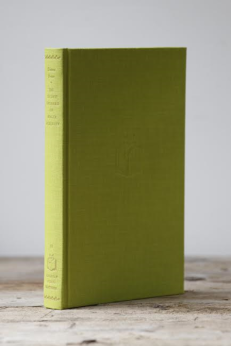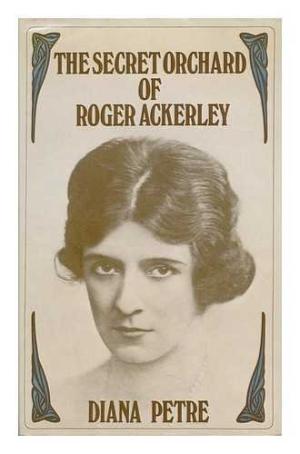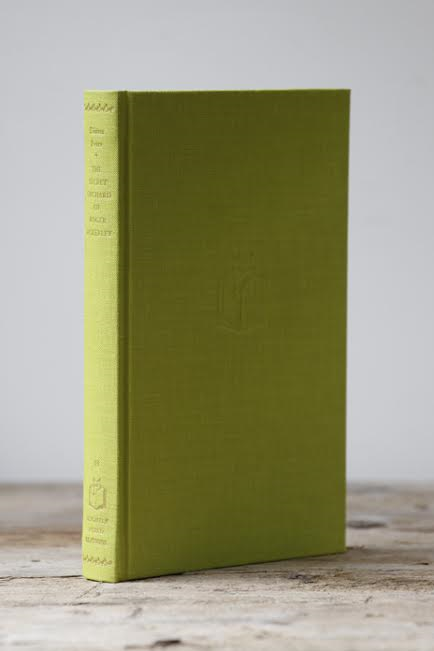 These Dividing Walls by Fran Cooper
These Dividing Walls by Fran Cooper
Set to the backdrop of a Parisian summer, this contemporary novel tells the story of the tenants of an apartment block. The fast-paced narrative, intertwined with the characters’ personal histories, their failed lives, love affairs, and secrets hold the readers attention. A landlady searches for her lost youth; another lives in her childhood apartment, remembering her privileged past; a young mother is frustrated with her life and is losing her mind; a young man wrestles with his faith; and another campaigns against a Muslim couple moving in. Meanwhile the divided politics and anti-Islamic threats rage through the city, risking livelihoods and lives. A timely issue, the book does not shirk from examining the varying ideologies at play. This is best displayed when a mild-mannered tenant deceives his wife and negotiates his place within the Far Right, a step that goes too far. A realistic character study of many humans existing together with their private lives worlds apart, Fran Cooper has written a Ship of Fools for the modern reader. Sharp and engaging, she brings forth the poetry and pathos of everyday lives and scenarios. A strong debut that is certain to appeal to, and strike a chord within, all readers.

The Rules of Magic by Alice Hoffman
In this sparkling prequel to Practical Magic Alice Hoffman brings the Owens family back to life, this time focusing on the upbringing of three siblings, Franny, Bridget ‘Jet’ and Vincent. The setting is New York City in the 1960s, and the children are raised in a conventional household by a child psychologist father and a mother whose background is quite mysterious. Through their mother they are blood witches and related to Maria Owens, a scarlet woman whose heartbreak turned into a curse, so whomever they fall in love with is destined to die. However when they spend the summer in Massachusetts with an aunt, they soon learn the rules of magic. Its charming imagery of eccentric aunts, black cats and spell books are balanced with the social issues such as the Vietnam war, Civil Rights, and the rise of hippy culture. And the narrative incorporates the subject of seventeenth-century witchcraft with discreet nods to authors such as Nathaniel Hawthorne. The combination of magic and the universal themes of love – romantic love and sibling love – allows the reader to have one foot in a magical world and another in real life. Much like the bewitching heroines of this book.

A Letter From Italy by Pamela Hart
It is 1917 and Rebecca Quinn, an Australian journalist, has come to Italy with her husband to report on the Italian war campaign. Given her profession and determination to make her own way in the world, she is an anomaly amongst her gender and colleagues. She is also confused by the language barrier, and the welcomed advances from an American-born Italian photographer, Alessandro. Recalling a time in both Italian and Australian history, Hart conveys the inner conflict of not only her protagonist, but of women from that era and the challenges they faced both politically and morally. Based on the real life war correspondent, Louise Mack, it brings to life WWI and journalism from a woman’s point of view. An inspiring read.

The Roanoke Girls by Amy Engel
An evocative and atmospheric novel set in the 2000s, even though it feels like a 1950s mystery: with the dramatic backdrop of the barren landscape of Kansas, much of the action occurs in a mansion whose walls contain too many secrets. Lane, a girl from New York, harbours a romantic vision of her family’s estate, Roanoke – despite her unstable mother’s warnings that it was hell. After her mother’s suicide, 15-year-old Lane goes to live there with her maternal grandparents, whom she does not know. At first, she senses a strange atmosphere, which she blames on her aloof grandmother and rebellious cousin Allegra. Both girls have come to Roanoke to be raised by their ageing grandparents, and they are bonded by decades of secrets trickling down the generations. From the opening page until the last sentence, the plot is packed with suspense and danger, and an unsettling feeling radiates off the characters. With its vivid visual imagery, this is a book that stays with you.

Histories by Sam Guglani
In this striking collection of short stories Sam Guglani reveals the inner-workings of a hospital along with the private observations of those who work in it. From a consultant, a junior doctor, a porter and a domestic, each individual seems to exist only in a medical environment and the stretch of corridors, wards, medical apparatus and patients make up the fabric of their lives in that moment. A doctor is struck by the beauty of a woman, even though her body is dying; a janitor fades into the background; a domestic is harassed by youths; a chaplain comforts the dying; an oncologist sees what the body hides. Throughout the interconnected stories morals are questioned, common sense is often overruled by literature, the hierarchy of roles within the hospital are taken for granted, and a patient fights for their life. With his vivid prose Giglani examines the fine line of mortality, and the role that each human plays throughout the discourse of the narrative. His background as a doctor at an NHS hospital and talent as a writer merges the two worlds to offer a unique look at a system under stress but one where humanity prevails. For fans of Lucia Berlin.

Manderley Forever by Tatiana de Rosnay
Although there has been various books published about Daphne du Maurier this is the first biography to be written as fiction. Originally translated from French and written in the present tense, the author’s handling of her protagonist is aloof; she relays facts without adding context, and the setting jumps around. It feels cinematic, as it slowly offers snippets of information to relay the fundamental qualities of what made Daphne tick. In that sense the biography is a clever one, and entirely original. Rosnay also draws on Daphne’s French heritage, and explores how this shaped her as a writer. The author manages to capture the balance between a courageous young woman, in both her private and public life, and the barrier she put up when around others who were not part of her world. An insightful and endearing book, it’s a must read for admirers of Daphne and her work.

Ava: A Life in Movies by Kendra Bean and Anthony Uzarowski
In this illustrated book on Ava Gardner, film historians and authors, Kendra Bean and Anthony Uzarowski reveal the layers of Gardner’s life, amidst her Hollywood fame and tumultuous romances. From her impoverished upbringing, to the highs and lows of a career spanning several decades, to her fabled marriage to Frank Sinatra, the authors, although respectful to Gardner herself, leave no stone unturned. Through their meticulous research and rare photographs we meet the woman behind the smokescreen, whose talent has become overshadowed by scandal and second-hand tales. What the reader will come away with, is a sympathetic portrait of a woman who was, perhaps, too human for Hollywood. A biography Gardner herself would be proud of.

Ghosts of Christmas Past edited by Tim Martin
Ideal for those (such as myself) who dislike the hype surrounding Christmas but still enjoy a little festive cheer. A collection of brilliant short stories written by past and contemporary authors. Drawing on big houses, mystery and scandal it is the ideal stocking-filler for those who the macabre. The perfect companion for the dark winter nights.

 Beginning in the early 2000s and working backwards to 1950, this is a story of a marriage told in reverse. Milly and Jack meet in San Francisco at the age of 21; he is a war hero, and she a secretary. When she marries and has children, Milly begins to feel as though her identity has been stolen. Jack is working in a job he hates and is frustrated at how his life is panning out. And so the conflict begins, and escalates as the years go on. As they examine their lives, they realise they have simply settled for less – she fights her inner thoughts about her children and how they do not fulfil her, and he feels short- changed by the American Dream. But the experiences they have shared over 60 years ultimately bind them together. Told from both of their perspectives, with a dash of black humour, it is an insightful book that reveals home truths about love. A compulsive read.
Beginning in the early 2000s and working backwards to 1950, this is a story of a marriage told in reverse. Milly and Jack meet in San Francisco at the age of 21; he is a war hero, and she a secretary. When she marries and has children, Milly begins to feel as though her identity has been stolen. Jack is working in a job he hates and is frustrated at how his life is panning out. And so the conflict begins, and escalates as the years go on. As they examine their lives, they realise they have simply settled for less – she fights her inner thoughts about her children and how they do not fulfil her, and he feels short- changed by the American Dream. But the experiences they have shared over 60 years ultimately bind them together. Told from both of their perspectives, with a dash of black humour, it is an insightful book that reveals home truths about love. A compulsive read.
 The House of Birds by Morgan McCarthy
The House of Birds by Morgan McCarthy





 Too Marvellous for Words by Julie Welch
Too Marvellous for Words by Julie Welch The Secret Orchard of Roger Ackerley (Slightly Foxed reprint edition) by Diana Petre
The Secret Orchard of Roger Ackerley (Slightly Foxed reprint edition) by Diana Petre In The Great Green Room: The Brilliant and Bold Life of Margaret Wise Brown by Amy Gary
In The Great Green Room: The Brilliant and Bold Life of Margaret Wise Brown by Amy Gary Joan: The Remarkable Life of Joan Leigh Fermor by Simon Fenwick
Joan: The Remarkable Life of Joan Leigh Fermor by Simon Fenwick The Book of Forgotten Authors by Christopher Fowler
The Book of Forgotten Authors by Christopher Fowler






